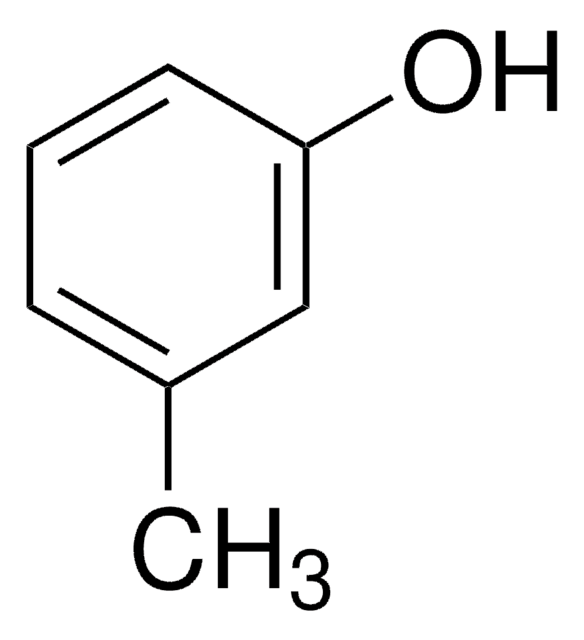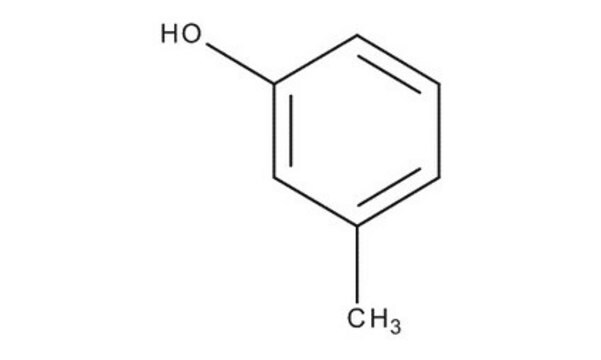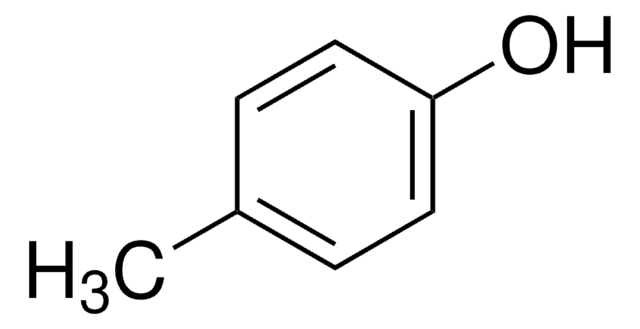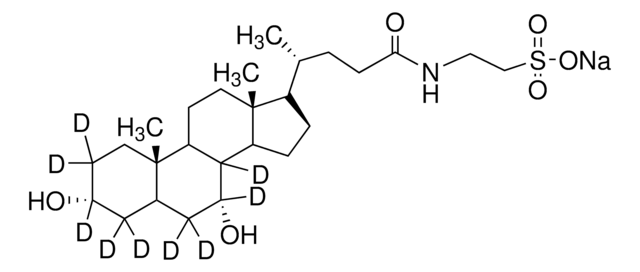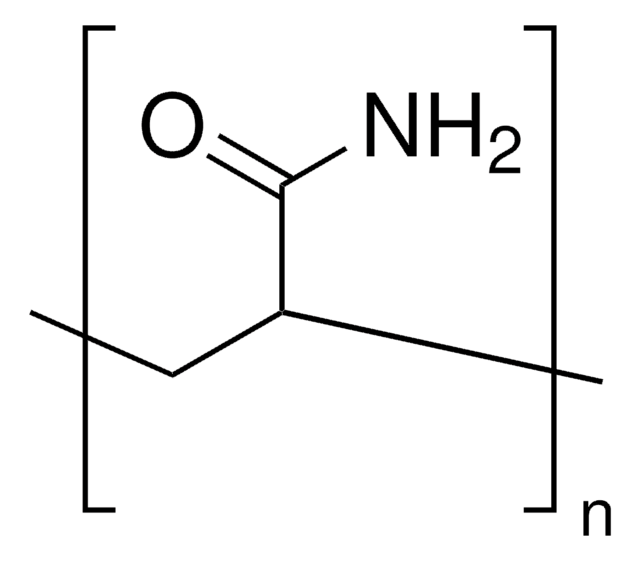C85727
m-Cresol
99%
Sinónimos:
1-Hydroxy-3-methylbenzene, 3-Hydroxytoluene, 3-Methylphenol
About This Item
Productos recomendados
Agency
suitable for SM 2310
suitable for SM 2320
Nivel de calidad
densidad de vapor
3.72 (vs air)
presión de vapor
<1 mmHg ( 20 °C)
Ensayo
99%
Formulario
liquid
temp. de autoignición
1036 °F
lim. expl.
1.06-1.35 %, 150 °F
índice de refracción
n20/D 1.541 (lit.)
bp
203 °C (lit.)
mp
8-10 °C (lit.)
densidad
1.034 g/mL at 25 °C (lit.)
cadena SMILES
Cc1cccc(O)c1
InChI
1S/C7H8O/c1-6-3-2-4-7(8)5-6/h2-5,8H,1H3
Clave InChI
RLSSMJSEOOYNOY-UHFFFAOYSA-N
¿Está buscando productos similares? Visita Guía de comparación de productos
Categorías relacionadas
Aplicación
- Porous porphyrin-based polyimides for selective CO2 capture.
- Thermoplastic polymers via thiol-ene Click reactions.
Palabra de señalización
Danger
Frases de peligro
Clasificaciones de peligro
Acute Tox. 3 Dermal - Acute Tox. 3 Oral - Aquatic Chronic 3 - Eye Dam. 1 - Skin Corr. 1B
Código de clase de almacenamiento
6.1A - Combustible acute toxic Cat. 1 and 2 / very toxic hazardous materials
Clase de riesgo para el agua (WGK)
WGK 2
Punto de inflamabilidad (°F)
186.8 °F - closed cup
Punto de inflamabilidad (°C)
86 °C - closed cup
Elija entre una de las versiones más recientes:
¿Ya tiene este producto?
Encuentre la documentación para los productos que ha comprado recientemente en la Biblioteca de documentos.
Los clientes también vieron
Nuestro equipo de científicos tiene experiencia en todas las áreas de investigación: Ciencias de la vida, Ciencia de los materiales, Síntesis química, Cromatografía, Analítica y muchas otras.
Póngase en contacto con el Servicio técnico